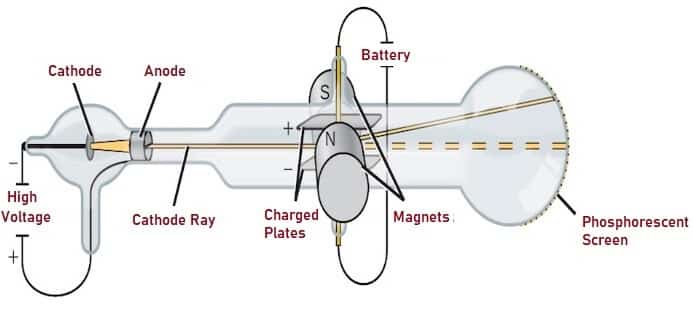
*A vacuum must be used to maintain a low pressure. Signal Processor - produces a mass spectrum, a record of the m/z's at which ions are present. Mass Spectrophotometer magnetic field heaviest ions stream of ions of different masses lightest ions electron beam gas Dorin, Demmin, Gabel, Chemistry The Study of Matter 3rd Edition, page 138Ĭomponents of a Mass Spectrometer Inlet Signal processor Detector Source Analyzer Vacuum Inlet- ensures that the sample enters the machine with minimal loss Source - sample components are ionized (the method by which this is done depends on the specific mass spectrometer being used.) Analyzer- accelerates ion and separates them Detector - records the charge induced when an ion passes by or hits a surface. Substances can be identified by their characteristic fragment ions represented on a mass spectrumĭetector plate Ion-accelerating electric field Least massive ions accelerated Ion beam Positive ions Sample Most massive ions Electron beam Magnetic field Slits Heating device to vaporize sample Mass spectrometers that break up molecules into fragments that can be characterized by electrical methods.The spectrum produced plots intensity (abundance of ions) against the ions’ mass-to-charge ratio.

These ions undergo further fragmentation producing smaller positive ions.
Molecules are bombarded by high energy particles that cause them to lose one electron and carry a +1 charge. Mass spectrometry is a technique used to separate a substance into ions based on their mass. The machine sorts ions according to their mass to charge ratio, something Thomson was able to calculate for the electron using the results of his cathode ray experiments. Thomson used a magnetic field to affect charged particles, so does a mass spectrometer. High voltage negative plate sourceof high voltage _ cathode + anode positive plate So what does J.J.  Since any electrode material produces an identical ray, cathode ray particles are present in all types of matter - a universal negatively charged subatomic particle later named the electron. This conclusion contradicted Dalton’s postulate and was not widely accepted by fellow physicists and chemists of his day. He concluded that atoms do contain subatomic particles - atoms are divisible into smaller particles. By comparison, Thomson estimated that the cathode ray particle weighed 1/1000 as much as hydrogen, the lightest atom. He compared the value with the mass/ charge ratio for the lightest charged particle. Thomson used magnetic and electric fields to measure and calculate the ratio of the cathode ray’s mass to its charge. Length of deflection region electric field length of drift region charge of ray particle x x x Electric deflection = 2 mass of ray particle velocity of ray particle x length of deflection region magnetic field length of drift region charge of ray particle x x x Magnetic deflection = mass of ray particle velocity of ray particle x magnetic deflection magnetic field = x velocity electric deflection electric field Thomson’s Calculations Cathode Ray Experiment High voltage negative plate source of high voltage _ cathode anode + positive plate The Effect of an Electric Field on Cathode Rays Dorin, Demmin, Gabel, Chemistry The Study of Matter, 3rd Edition, 1990, page 117Ĭathode Ray Experiment - Displacement Volts Anodes / collimators Cathode + Deflection region Drift region High voltage The Effect of an Obstruction on Cathode Rays shadow source of high voltage cathode yellow-green fluorescence Dorin, Demmin, Gabel, Chemistry The Study of Matter, 3rd Edition, 1990, page 117 The rays bent towards the positive pole, indicating that they are negatively charged.
Since any electrode material produces an identical ray, cathode ray particles are present in all types of matter - a universal negatively charged subatomic particle later named the electron. This conclusion contradicted Dalton’s postulate and was not widely accepted by fellow physicists and chemists of his day. He concluded that atoms do contain subatomic particles - atoms are divisible into smaller particles. By comparison, Thomson estimated that the cathode ray particle weighed 1/1000 as much as hydrogen, the lightest atom. He compared the value with the mass/ charge ratio for the lightest charged particle. Thomson used magnetic and electric fields to measure and calculate the ratio of the cathode ray’s mass to its charge. Length of deflection region electric field length of drift region charge of ray particle x x x Electric deflection = 2 mass of ray particle velocity of ray particle x length of deflection region magnetic field length of drift region charge of ray particle x x x Magnetic deflection = mass of ray particle velocity of ray particle x magnetic deflection magnetic field = x velocity electric deflection electric field Thomson’s Calculations Cathode Ray Experiment High voltage negative plate source of high voltage _ cathode anode + positive plate The Effect of an Electric Field on Cathode Rays Dorin, Demmin, Gabel, Chemistry The Study of Matter, 3rd Edition, 1990, page 117Ĭathode Ray Experiment - Displacement Volts Anodes / collimators Cathode + Deflection region Drift region High voltage The Effect of an Obstruction on Cathode Rays shadow source of high voltage cathode yellow-green fluorescence Dorin, Demmin, Gabel, Chemistry The Study of Matter, 3rd Edition, 1990, page 117 The rays bent towards the positive pole, indicating that they are negatively charged.  Using a cathode ray tube, Thomson was able to deflect cathode rays with an electrical field.
Using a cathode ray tube, Thomson was able to deflect cathode rays with an electrical field. 
Source of Electrical Potential Stream of negative particles (electrons) Metal Plate Gas-filled glass tube Metal plate A Cathode Ray Tube Zumdahl, Zumdahl, DeCoste, World of Chemistry2002, page 58Ĭathode Ray Experiment 1897 Experimentation
Travel in straight lines in the absence of an external field. Originate at the cathode (negative electrode) and move to the anode (positive electrode). Form when high voltage is applied across electrodes in a partially evacuated tube.








 0 kommentar(er)
0 kommentar(er)
